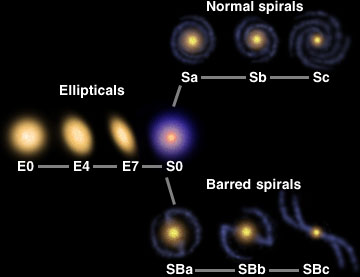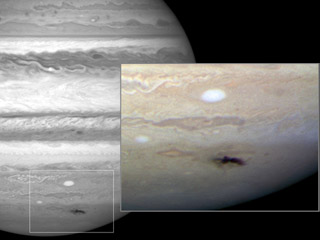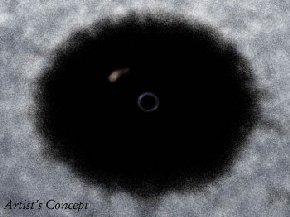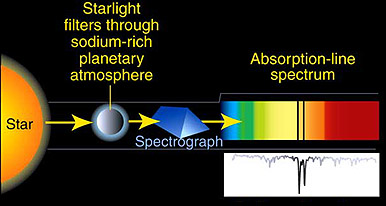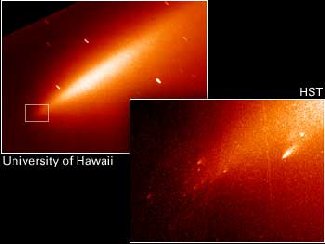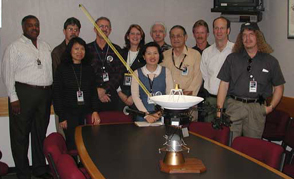Click on image for full size
Courtesy of NASA
Hubble Space Telescope
The Hubble Space Telescope (HST) was one of the most important exploration tools of the past two decades, and will continue to serve as a great resource well into the new millennium. The HST found numerous objects while photographing nebulae, galaxies, stars and other distant objects.
The Hubble was first launched in 1990 from Space Shuttle Discovery, but the project began many years before. The design and construction started in the 1970's, and some say scientists dreamed up the idea even before that. The project is a joint one between the National Aeronautics and Space Administration (NASA) and the European Space Agency (ESA).
The observatory and its many instruments orbit the Earth at approximately 600 km above the surface. The instruments include cameras that take pictures of distant objects and spectrographs that analyze incoming light. Between 1993 and 2009, NASA sent five Space Shuttle missions to the Hubble to repair it and install new scientific instruments. The Hubble is expected to continue operating through 2015-2020.
The Hubble was only the first four "Great Observatories" launched by NASA. Although Hubble's instruments make observations in ultraviolet, visible, and near-infrared wavelengths, the Compton Gamma Ray Observatory, the Chandra X-ray Observatory, and the Spitzer Space Telescope (infrared) study our universe by observing more of the electromagnetic spectrum.
Below is a short list of the many discoveries involving the HST. There are many more news pieces about the Hubble in Headline Universe.







